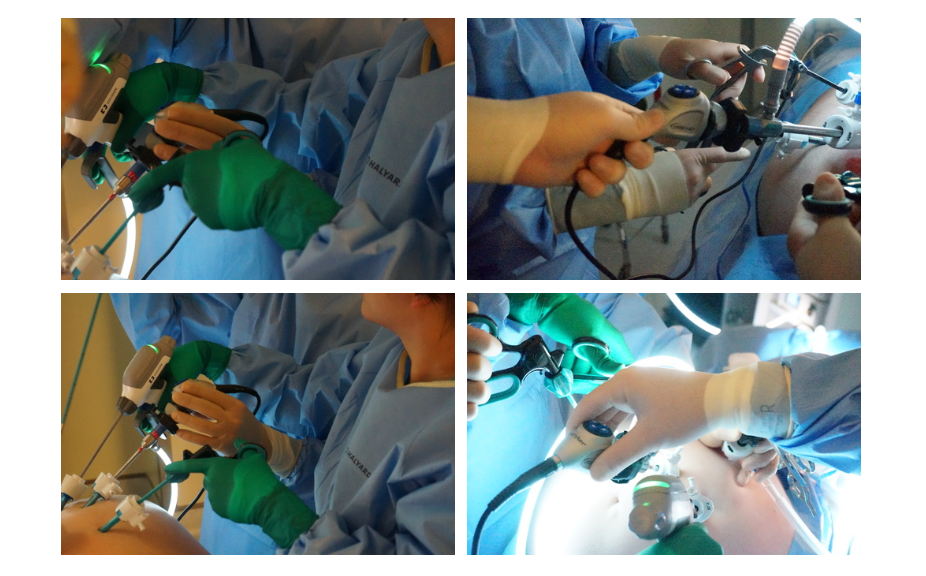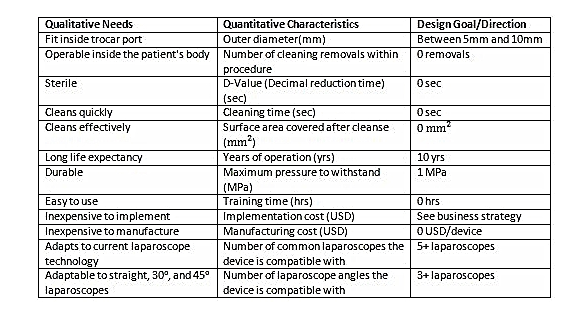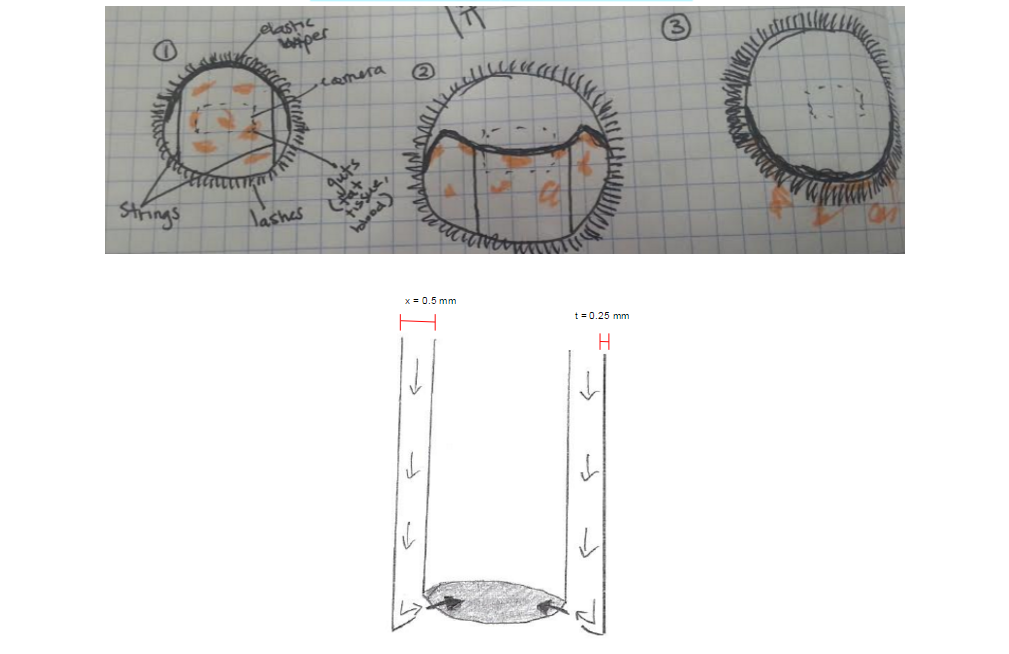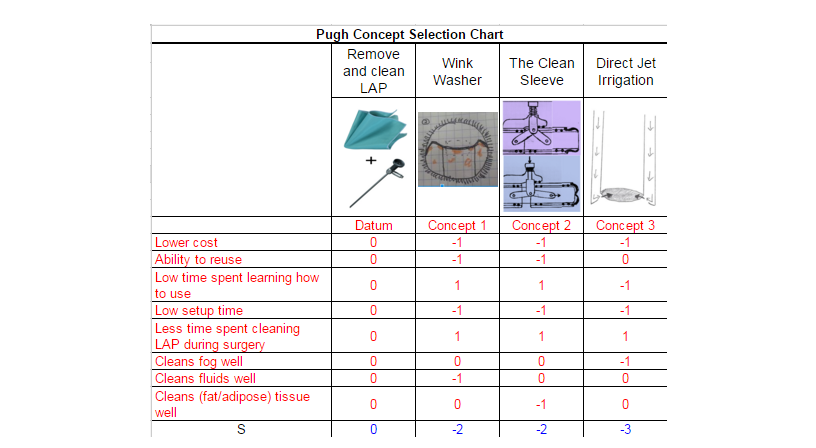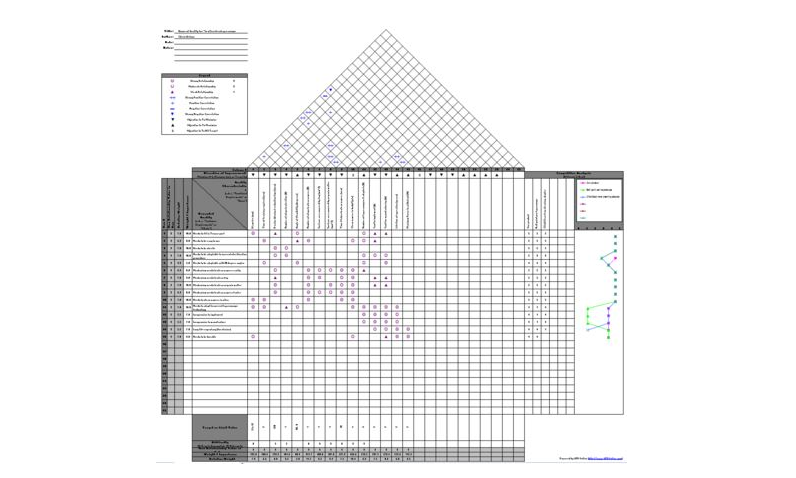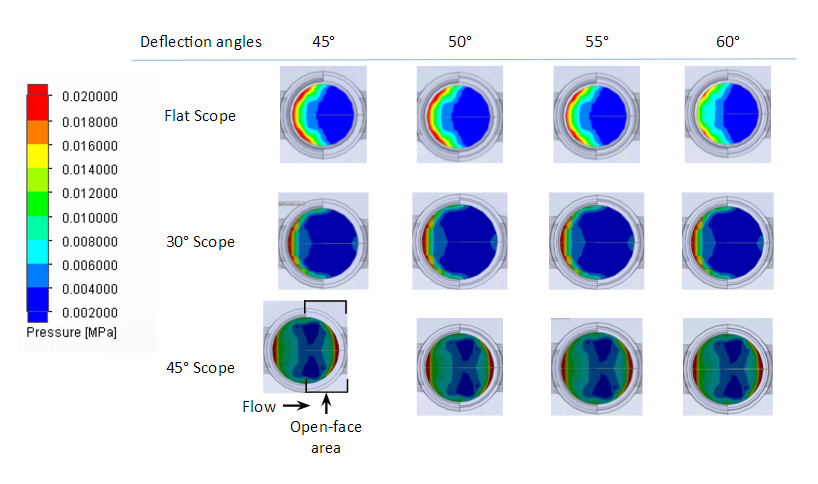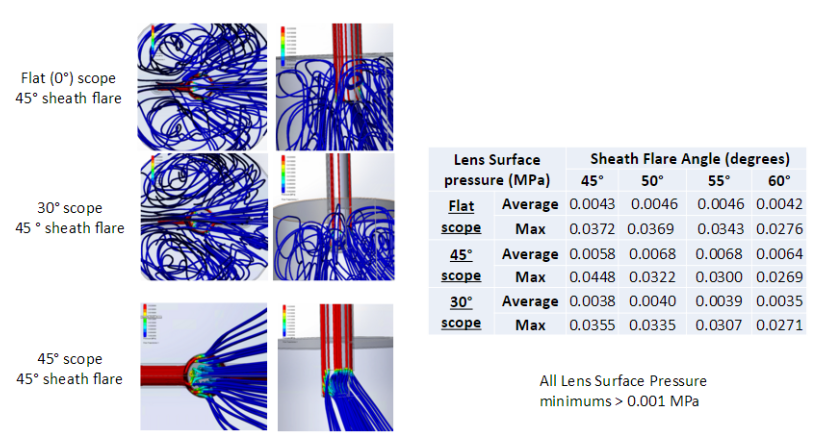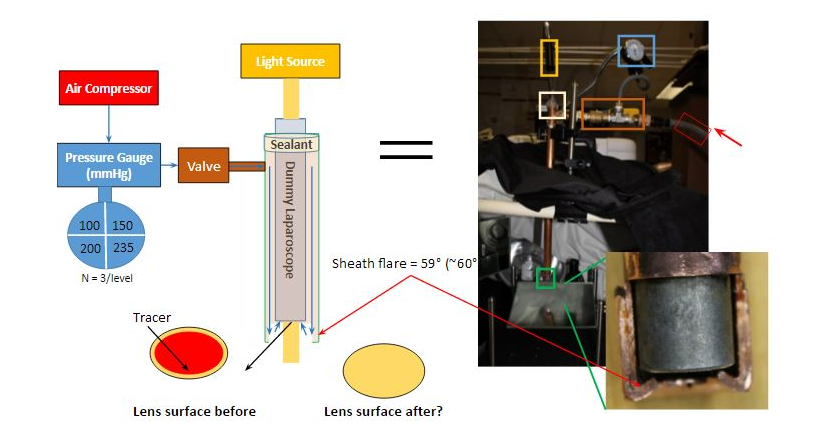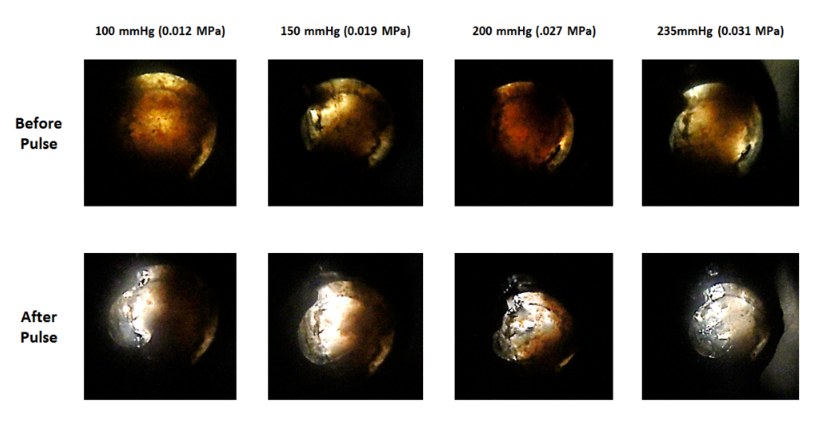Lap-Wipe:
In-vivo Laparoscope Lens-Cleaning Attachment
Problem
During invasive surgeries, laparoscope lenses become smeared with biological residue and impairs the surgeons' vision into the patient's body.
Currently the best practices are:
Wiping the lens on nearby organ tissue and
Removing the laparoscope and wiping the lens with a cloth.
While wiping the lens on organ tissue is quick, it is usually not effective because the organ surfaces are not clean. Removing and cleaning the lens with a cloth is time consuming and potentially exposes the patient to unnecessary risk of infection. By solving this, we can reduce surgery times, and reduce the risk of surgery failures.
Problem Statement: Create an attachment for laparoscopes that allows surgeons to clean the laparoscope lens in-vivo during a surgical procedure.
Solution
The solution we developed is a sheath attachment for the laparoscope that uses a burst of carbon dioxide (CO2) to wipe debris off the lens. When the surgeon presses a pedal, a burst of CO2 flows from the insufflator, through the Lap-Wipe sheath, onto the lens. The Lap-Wipe sheath has a port that connects to the insufflator for a constant supply of CO2, and another port to to send bursts of . At the end of the laparoscope, the Lap-Wipe’s curved tip directs the air onto the lens.
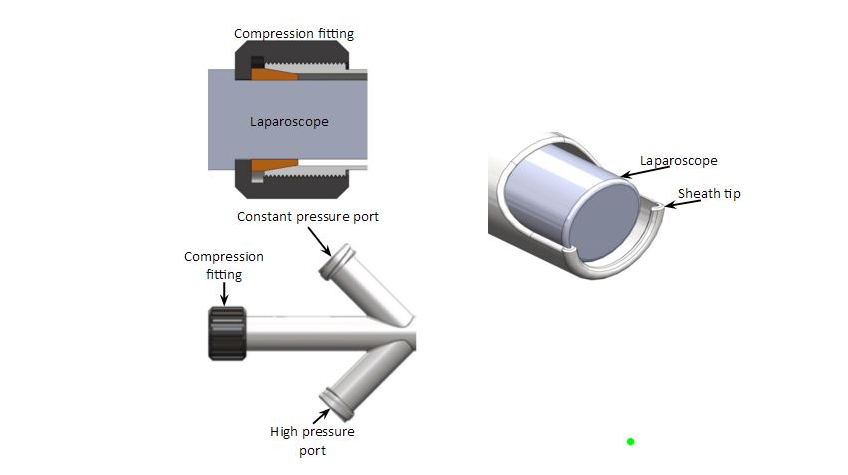

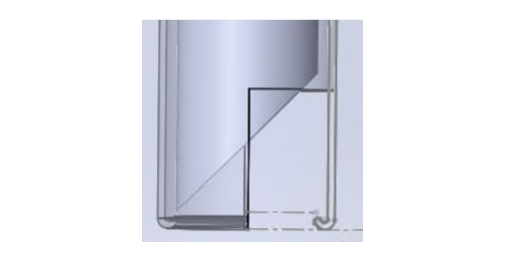

Process
Engineering and Design Team: Christopher Idleson, Justin Walden, Christopher Tran
Mentors: Dr. Jawad Ali, Dr. John Uecker (Clinical Advisor), Dr. James Tunnell (Technical Advisor)
My role: Engineering Designer
Generative Research to understand laparoscopy and the market for laparoscopy devices
Methods: Interviews with users, literature reviews, observations (cadaver surgery)
Brainstorm and Design Selection to determine a product design
Methods: Mind mapping, Design Specifications, Pugh Chart, House of Quality
Prototype Evaluations to determine future design directions
Methods: SolidWorks modelling and flow simulation, concept prototyping and testing
Challenge 1: Understanding Laparoscopic Surgery
We reviewed literature to understand the laparoscopy and the laparoscopic device market. We had found two existing devices, ClickClean and FloShield. ClickClean uses a mechanical system to drag a clear film across the lens screen, and the FloShield uses a constant supply of CO2 to prevent debris from reaching the lens. Our surgeon contact expressed that neither were commonly used.
We interviewed a surgeon, asking about his and his colleague’s pain points. We then were invited to observe a laparoscopy practice with him and his medical students.
Outcomes:
From the existing solutions, we learned that both mechanical and pneumatic solutions were viable. The surgical rooms already have insufflators as supplies of CO2, reducing the extra need for a CO2 source for pneumatic solutions.
From the observations, we found that (1) doctors use various different hand positions to hold laparoscopes and (2) during the procedures, the doctors tire from the weight of the laparoscope. For usability, we aimed to design a solution that would not restrict doctors to a particular handhold while not adding much weight.
If I were to revisit this… I would recruit more surgeons to interview, and determine the pain points of the 2 existing solutions. This project was more of an engineering project, so we did not do much user research; we were more concerned with the mechanics of how the device may function.
Challenge 2: Designing the Wiper Function
Using our insights, we determined the design specifications for the device to fit into the body and wipe debris off the lens. We then mind mapped and sketched different ideas. The Wipe-Wink idea uses wires to pull an elastic band across the lens. The Jet Irrigation idea uses a flow of fluid to brush debris off the lens.
We used a Pugh Chart and House of Quality to compare our concepts against the design requirements.
Outcome:
We decided that the pneumatic Direct Jet Irrigation idea was safer than the mechanical ideas, as the mechanical ideas required several miniature mechanical parts that could potentially fall inside the patient body. The fact that operating rooms had CO2 supplies allowed for the jet irrigation concept to be implemented without much infrastructure change. This design could be actuated by a foot pedal, allowing for the various hand positions.
We decided to continue with the fluid irrigation concept, and were left with the question of whether this concept could wipe effectively.
If I were to revisit this… I would separate the usability specifications from the functional specifications and evaluate the concepts using different analysis methods.
Challenge 3: Evaluating the Air-Wipe Concept
We evaluated the concept in 2 ways: (1) Modelling and running fluid flow simulations on SolidWorks, and (2) Concept prototyping and testing on a simple, larger scale.
We modeled our Lap-Wipe design, and tested to see the air pressure applied by a burst of CO2 on the lenses for 3 different angles or laparoscope lenses. We tested with 4 different angles of tip deflection at the in-vivo end of the Lap-Wipe.
The simulation showed high pressure only on the edges of the lens where the tip deflected the CO2, while the centers of the lenses received little pressure.
The 45 and 50 degree angle deflections seemed to be most effective for maximizing air pressure
The current design was most effective at applying pressure on the 45 degree laparoscope
We created a prototype using a copper pipe to mimic a sheath, and an air compressor to mimic the CO2 supply and flow mechanism. We smeared sauce on the lens, and tested how effectively air could shear the sauce off the lens of the pipe. The results show that the pressurized air bursts were able to clear debris, but only on the areas adjacent to the deflected sheath end.
Both the simulation and prototype test showed areas on the lens that would have high air pressure, and areas on the lens that would receive low air pressure. Both tests showed that the concept was ineffective at clearing the whole area of the laparoscope lens.
If I were to continue…
I would try designing different device ends for each angle of laparoscope. Full deflection coverage may be more effective on flat laparoscopes.
More importantly, I would do further research and evaluations with the existing products to understand their effectiveness and why they are not commonly used.
Take-Aways
Experience in combining market and user research to create design requirements and guide design
Emphasis on testing with early prototypes and simulations to make quick and inexpensive design decisions
Deepened understanding of the emphasized safety and regulatory hurdles in designing for medical devices

